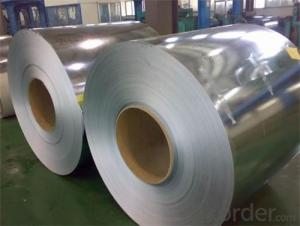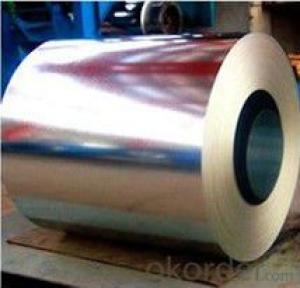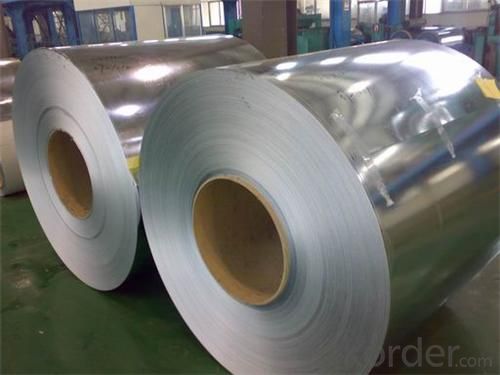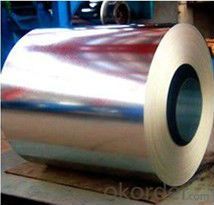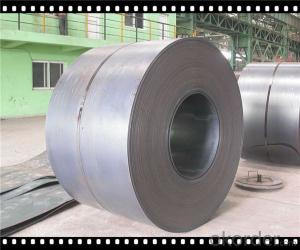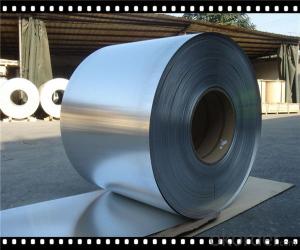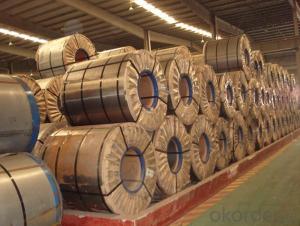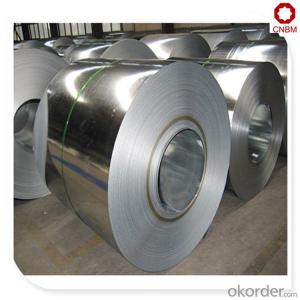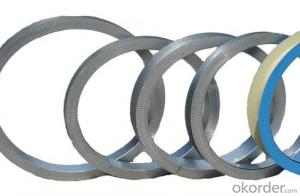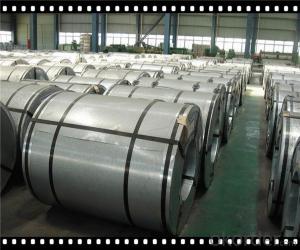dip galvanized steel coil CNBM
- Loading Port:
- Qingdao
- Payment Terms:
- TT OR LC
- Min Order Qty:
- 100 set
- Supply Capability:
- 300000 set/month
OKorder Service Pledge
OKorder Financial Service
You Might Also Like
Quick Details
| Standard: | AISI,ASTM,BS,DIN,GB,JIS | Grade: | SGCC/SGCH/DX51D | Thickness: | 0.16-1.8mm |
| Place of Origin: | China (Mainland) | Brand Name: | CNBM | Model Number: | 762/914/1000/1219/1250/1500mm |
| Type: | Steel Coil | Technique: | Cold Rolled | Surface Treatment: | Galvanized |
| Application: | Container Plate | Special Use: | High-strength Steel Plate | Width: | 762/914/1000/1219/1220/1250/1500mm,762/914/1000/1219/1220/1250/1500 |
| Certificate: | ISO 9001 | Zinc coating: | 50-275g/m2 | Brand: | HB SINOSTAR |
| Coil weight: | 3-5mt | Treatment: | Chromated&Anti-finger | Spangle: | Zero/small/regular/big |
| Size: | 0.16-1.8mm | Hard/soft: | HRB55-60 HRB85-90 |
Packaging & Delivery
| Packaging Detail: | we can make the proper package acording to the market of your country,and we can also design qualified package according to your taste or need |
| Delivery Detail: | 30 days after receipt of the deposit |
Specifications
dip galvanized steel coil
Hard and soft:HRB55-60 HRB85-90
Coil weight:3-5mt
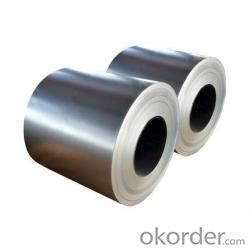

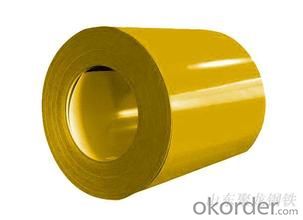
dip galvanized steel coil
1.Thickness: 0.16-1.8mm
2.width: 762/914/1000/1219/1220/1250/1500
3.zinc coating: 50-275g/m2
4.material: SGCC/SGCH/DX51D
5.spangle: Zero/small/regular/big
6.surface treatment: chromated and oiled, chromated and non-oiled
7.packing: export standard packing
8.Payment: TT / or D/P or L/C
9.MOQ: 25 metric ton
10.coil weight: 3-5ton
11.quality: soft or hard quality
Goods name | Hot dipped galvanized steel coil |
Place of origin | Shanghai |
Quality | Prime quality |
Certificate | ISO9001 |
Thickness | 0.16-1.8mm |
Width | 762/914/1000/1219/1220/1250/1500mm |
Zinc coating | 50~275g/sqm2 zerospangle/ smallspangle /regularspangle /Big spangle |
Hard and soft | HRB55-60 HRB85-90 |
Coil weight | 3-5mt |
Ensure | we can supply customers' with different specifications of the highest quality and lowest price. Sincerely welcome to contact us for the future details if any item interest you ,and we will make every effort to assure that your requirements will be satisfied,and we hope to establish long-term business relations with you on the basis of the equality and mutual benefit. we are waiting for your email.
|
- Q: How are steel coils used in the production of construction machinery?
- Steel coils are used in the production of construction machinery as they provide the necessary strength and durability required for heavy-duty equipment. These coils are shaped and formed into various components such as frames, chassis, and structural parts, ensuring the machinery can withstand the rigorous demands of construction sites. The versatility and malleability of steel coils allow manufacturers to create complex and intricate designs, resulting in reliable and robust construction machinery.
- Q: I'm trying to bend stainless steel spoons, forks knives etc. for an art project. Will heating them help bend them into certain shapes or will heat only strengthen it? What is the best way to bend stainless steel?
- Refer okorder /
- Q: like building steel beams. i'm pretty sure with a sawzall.
- Most I-beams are manufactured in a factory by rolling the red hot steel billet through several sets of rolls till the I-beam takes it's final shape. All we normally do to a factory stock I-beam is cut it to length, trim the ends, punch out the mounting holes and or weld on shear tabs. Some I-beams like tapered ones are built from scratch in the shop using plate steel. In fabricating in the shop, a plasma cutter or cutting torch is used along with a hydraulic plate shear. Repairs during erection, usually a cutting torch because you are several stories in the air. If the beam has to be taken to the ground, still a cutting torch because on a job site power availability is poor to connect a plasma cutter. Wingman
- Q: Is it just because brass is reloadable? But what makes it reloadable? What does brass bring to the equation that the steel cased ammo can't do?
- Brass is slightly softer than annealed steel. Both can be reloaded, once or maybe even twice. But STEEL has a tendency to WORK HARDEN, becoming brittle. Which is why it's used for tools and other applications where work hardening is a plus. It's actually designed to do that. Brass does not work harden, because it is a different sort of metal. That's the main reason.
- Q: How are steel coils used in the manufacturing of metal containers?
- Steel coils are used in the manufacturing of metal containers by being unrolled and shaped into the desired form using specialized machinery. These coils provide the necessary strength and durability to the containers, ensuring they can withstand the rigors of transportation and storage.
- Q: Can steel coils be coated with chrome?
- Yes, steel coils can be coated with chrome.
- Q: what is the chemical process that makes steel harder when it is heated and cooled rapidly?what does the heating of it do to the atoms?what does the cooling of it do to the atoms?what makes tempered steel so strong compared to untempered steel?
- You can't temper all steels. Generally the material must be a high-carbon or tool steel. Different alloys temper differently, and tempering is usually done to get a specific set of characteristics, so you must know what you are working with and use the right methods and temperature. If you do it wrong, the material may be hard but too brittle for the purpose or have other issues. It can be simple, such as heating to a dull red, carbonizing the surface (use an acetylene rich flame until it blackens the surface) and oil quenching. Do that to a piece of tool steel (like a screwdriver) and it will case (surface) harden it to the point you can't scratch it with a file. Tempering changes the way the molecular structure in the metal is linked and oriented.
- Q: Does the solution change, or does only the steel wool change color?
- Steel is an iron alloy, and iron is more reactive than copper, so what you'd see is the blue colour of the solution becoming lighter, and a black precipitate appearing on the steel wool.
- Q: What are the different methods of surface cleaning for steel coils?
- There are multiple options available for cleaning the surface of steel coils, and the choice of method relies on specific requirements and conditions. 1. Mechanical Cleaning: To physically eliminate dirt, rust, or other contaminants from the surface of steel coils, mechanical tools like wire brushes, sanding discs, or abrasive pads are used. It is commonly employed for light cleaning and can be done manually or with the assistance of automated equipment. 2. Chemical Cleaning: By using various cleaning agents or solvents, chemical cleaning dissolves or loosens contaminants from the surface of steel coils. This method effectively removes oil, grease, or stubborn dirt. The selection of chemicals depends on the type of contaminants and the desired level of cleaning. It is crucial to adhere to safety guidelines and use appropriate protective equipment when utilizing chemical cleaners. 3. Power Washing: High-pressure water jets are utilized in power washing or pressure washing to eliminate loose particles, dirt, or contaminants from the surface of steel coils. This method is effective for extensive cleaning and can be combined with chemical cleaners for better results. Adjusting the water pressure according to the surface type and using suitable nozzles is important to prevent damage. 4. Pickling: Pickling is a chemical cleaning method that involves immersing steel coils in an acidic solution, typically a mixture of hydrochloric acid and sulfuric acid. This process eliminates scale, oxides, and other impurities from the steel's surface. Pickling is frequently employed for heavy-duty cleaning and preparing steel coils before further processing or coating. 5. Electrolytic Cleaning: Electrolytic cleaning employs an electric current to remove contaminants from the surface of steel coils. The coils are submerged in an electrolyte solution, and the application of direct current causes the contaminants to dissolve or dislodge. This method is highly effective for eliminating rust or corrosion and can be used in conjunction with other cleaning methods. When choosing the appropriate surface cleaning method, it is vital to consider factors like the type and condition of the steel coils, the required level of cleanliness, and any specific industry standards or regulations. Regular maintenance and cleaning are essential to ensure the longevity, performance, and corrosion resistance of steel coils.
- Q: What are the different methods of slitting edge trimming for steel coils?
- There are several methods of slitting edge trimming for steel coils, including rotary shear slitting, crush cutting, and laser cutting. Each method has its advantages and disadvantages, depending on factors such as the desired precision, speed, and the type of steel being processed.
Send your message to us
dip galvanized steel coil CNBM
- Loading Port:
- Qingdao
- Payment Terms:
- TT OR LC
- Min Order Qty:
- 100 set
- Supply Capability:
- 300000 set/month
OKorder Service Pledge
OKorder Financial Service
Similar products
Hot products
Hot Searches
Related keywords
